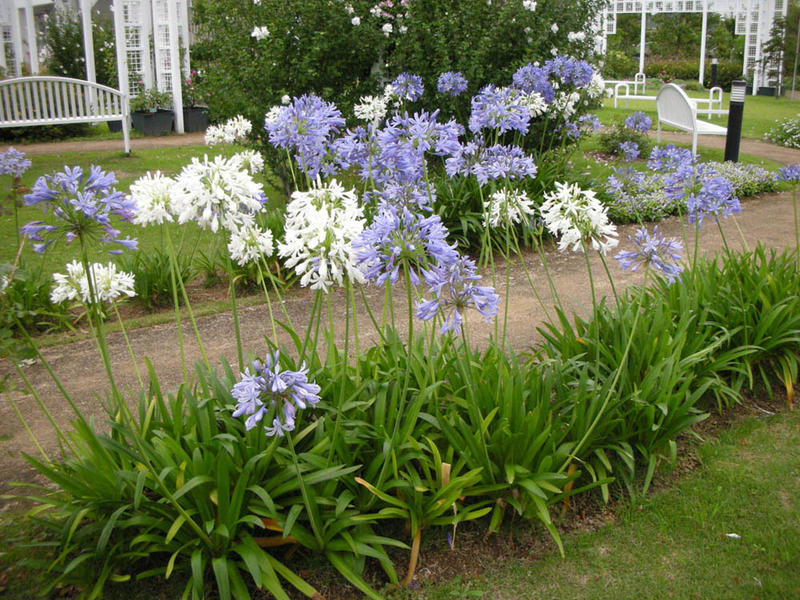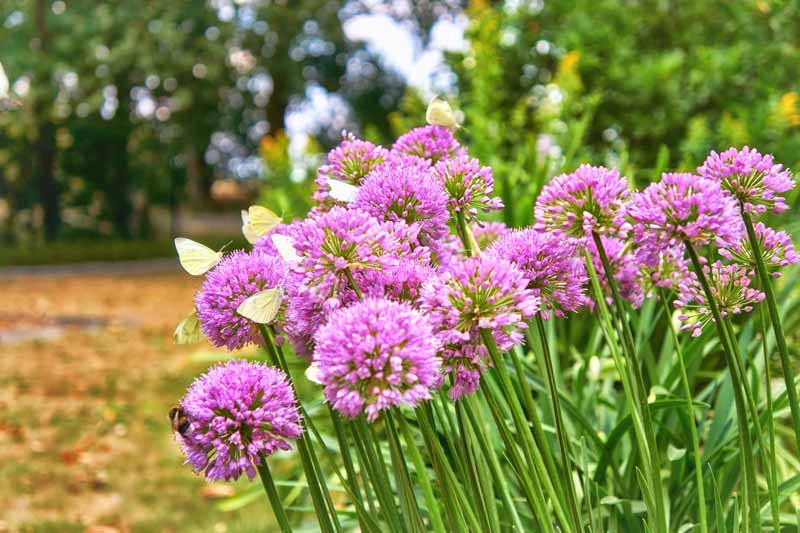Expanding Agapanthus: A Complete Guide to Beautiful Blooms
Expanding Agapanthus: A Complete Guide to Beautiful Blooms
Blog Article
Grasping the Art of Agapanthus Care: Vital Steps for Healthy And Balanced Development and Lively Blossoms
In the realm of cultivation, the farming of agapanthus stands as a gratifying venture for those who look for to support these stylish flowering plants. With their striking blooms and elegant foliage, agapanthus has actually captured the attention of garden enthusiasts worldwide. However, accomplishing optimum growth and lively blossoms requires a nuanced approach that incorporates different vital actions. From selecting the appropriate variety to mastering trimming strategies, the journey towards cultivating thriving agapanthus plants is diverse and holds the crucial to opening the complete possibility of these botanical gems.

Selecting the Right Agapanthus Range

When picking the appropriate Agapanthus range for your yard, think about aspects such as environment suitability, flower shade, and growth routine. Agapanthus, generally known as Lily of the Nile or African lily, is available in a selection of shades ranging from tones of purple and blue to white. Select a bloom color that matches your existing garden scheme to produce an unified landscape. Furthermore, think about the climate in your area to make sure the Agapanthus selection you choose can grow in your specific problems. Some selections are a lot more tolerant of cool temperature levels, while others choose warmer environments. Understanding the development practice of different Agapanthus varieties is vital for appropriate positioning within your garden. Some ranges have a clumping growth practice, perfect for containers or borders, while others have a more spreading nature, suitable for ground cover or mass growings. By meticulously examining these elements, you can choose the perfect Agapanthus selection to improve the appeal of your garden.
Perfect Growing Problems
Considering the optimum environmental needs is necessary for successful Agapanthus farming. Agapanthus plants are sensitive to cool temperature levels and need to be shielded from frost during winter season months.
To guarantee healthy growth and lively blooms, plant Agapanthus light bulbs at a deepness of concerning 2-4 inches and area them 8-12 inches apart. Including raw material, such as compost, to the dirt can boost drain and fertility, advertising robust origin advancement. Mulching around the base of the plants helps preserve pop over here wetness and reduces weed growth. Normal watering is critical, especially during the expanding period, to maintain the dirt consistently damp yet not waterlogged.
Watering and Feeding Tips
Maintaining correct moisture degrees and providing essential nutrients are crucial elements in the care routine for Agapanthus plants. When it comes to sprinkling Agapanthus, it is crucial to strike an equilibrium. These plants prefer consistently damp soil but are vulnerable to root rot if overwatered.
Feeding Agapanthus is vital for advertising healthy development and respected blossoms. Apply a well balanced fertilizer, such as a 10-10-10 formula, in the early spring as new development emerges. By adhering to these watering and fertilizing pointers, you can ensure your Agapanthus plants prosper and generate vibrant, durable flowers.
Pruning Strategies for Agapanthus
Trimming Agapanthus plants at the ideal times and with appropriate techniques is critical for preserving their wellness and advertising optimum development and blooming. The perfect time to prune Agapanthus is in late winter season or very early spring prior to brand-new growth arises.
Deadheading invested blossoms can likewise reroute the plant's energy right into creating more flowers rather than setting seeds. If you desire to collect seeds for breeding, leave some flowers to mature and completely dry on the plant.
Keep in mind to make use of clean, sharp devices to make accurate cuts and decrease the threat of presenting illness. Agapanthus. Routine pruning will certainly help keep your Agapanthus looking healthy and balanced and cool while making certain an abundant display screen of stunning blossoms
Handling Common Parasites and Conditions
After making certain proper trimming methods for Agapanthus, it is essential to attend to usual bugs and conditions that can affect the wellness and vitality of these plants. One common insect that affects Agapanthus is the Agapanthus gall midge.
Furthermore, Agapanthus plants can suffer from root rot if webpage they are grown in improperly draining soil. By being attentive and taking prompt action against conditions and pests, you can help your Agapanthus plants thrive and generate lively flowers. Agapanthus.

Conclusion
Finally, grasping the art of agapanthus treatment includes selecting the ideal range, providing excellent growing conditions, correct watering and feeding, suitable pruning methods, and attending to typical insects and illness. By complying with these essential actions, you can guarantee healthy development and dynamic flowers for your agapanthus plants. Bear in mind to routinely check and maintain your plants to advertise their general health and longevity.
To guarantee healthy growth and dynamic flowers, plant Agapanthus bulbs at a deepness of concerning 2-4 inches and area them 8-12 inches apart. By following these watering content and feeding tips, you can ensure your Agapanthus plants flourish and produce dynamic, resilient blooms.
One typical parasite that influences Agapanthus is the Agapanthus gall midge. In addition, Agapanthus plants can experience from origin rot if they are planted in badly draining pipes dirt. By adhering to these important actions, you can guarantee healthy and balanced development and vibrant flowers for your agapanthus plants.
Report this page